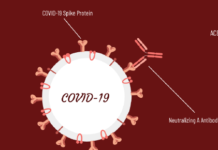In elementary school, I was made fun of for coming to school smelling like smoke. My clothes kept the smell all day! We have a lot of people in our family that smoke. We wonder what is happening to our family’s health, but also to us and our lungs.
Second hand smoke is smoke from a cigarette, cigar, or pipe that is accidently inhaled. Second hand smoke is accountable for 42,000 deaths annually to nonsmokers in the United States, this includes nearly 900 infants, according to research published September 20, 2012 from the University of California, San Francisco (UCSF). Children between the ages 12 and 17 are more affected by second hand smoke than other kids. Children are more affected by second hand smoke because they are still developing physically.
According to UCSF, annual deaths from second hand smoke represent about 600,000 years of potential life years lost, which is an average of 14.2 years per person, and 6.6 billion in lost productivity, amounting to $158,000 per death. The UCSF research says that despite public health efforts to get people to quit tobacco use, second hand smoke continues to affect nonsmokers.
According to the Cleveland Clinic Tobacco Treatment Center, if you don’t smoke and are exposed to second hand smoke on a regular basis, your body absorbs nicotine and other harmful substances, just like the natural smokers do. The longer you are around second hand smoke, the more the risk of getting harmful substances into your body. There is a greater risk of getting lung cancer, heart disease, emphysema, eye and nasal irritation, and asthma. In children, second hand smoke can cause ear infections, more frequent and severe asthma attacks, respiratory symptoms that include coughing, sneezing, shortness of breath, and respiratory infections including pneumonia.
According to the U.S. Centers for Disease Control and Prevention (CDC), babies exposed to second hand smoke have a greater risk of Sudden Infant Death Syndrome. Nonsmokers who are exposed to second hand smoke at home or work increase their heart disease risk by 25% to 30%. Second hand smoke causes an estimated 46,000 cases if heart disease annually in adult non-smokers in the United States, says CDC.
We surveyed 173 seventh grade students at Farnsley Middle School and there were 147 or 85% of students that said that there were people in their family that smoke. Also, 85 out of that 147, or 58%, of the students said that their family members smoke around them. That is a lot of people that second hand smoke is affecting.
“In general, fewer people are smoking and many have made changes, but our research shows that the impact of second hand smoke are nonetheless very large,” said lead author Wendy Max, Ph.D., Professor of Health Economies at the UCSF School of Nursing and Co-director of the UCSF Institute for health and aging. “The amount of information that is available on biomarker measured exposure allows us to more accurately access the impact of second hand smoke exposure on health and productivity. [Biomarkers are measureable substances or characteristics in the human body that can be used to monitor the presence of a chemical in a body.] The impact is particularly great for communities of color.” In this study, Max is referencing African Americans.
According to the UCSF study, second hand smoke includes different gases and particles that have been exhaled or breathed out by whoever is smoking, and more than 7,000 chemicals including hundreds that are poisonous, and about 70 that can cause cancer. Cassidy Cardwell & Ashley Mullins

This work is licensed under a Creative Commons Attribution-NonCommercial-NoDerivs 3.0 Unported License














>2013
>second hand smoke is dangerous
>shiggy diggy
Well written article !!! ð:-???
:cried:cried:cried:cried:cried:cried:cried:gamba
great job
:smile THAT WAS THE BEST I HAD READ IN A LONG TIME KEEP IT I[ THE ARTICLE WAS WELL THOUGHT OUT AND EVERYTHING
I’m so proud of u girls.
this is to fa. u 2 got #swag:smile:good
… i was too. no not really but i know pople whoe were.
I really like the article and I am very glad that it was published.
I like this article. I fount out many interesting things I didnt know before about second hand smoke.
i really enjoy this topic
umm, this article is very good. it tells a lot of information about what happens to the lungs when disease occurs.
very well done. gives information on facts about 2nd hand smoking !
Teens may be a victim in second hand smoke and they do not even know it. This article gives information on second hand smoke by using numbers. Great article!
told me how second hand smoking is bad for you
thanks everyone. I really appreciate it!:smile
what year did you make this:erm
[youtube][/youtube] you got the it #swagga:cried:cried:cried:cried:gamba:gamba:gamba:gamba
This was a great article and it informed me about the hazards of second hand smoke and I will refer this to many others